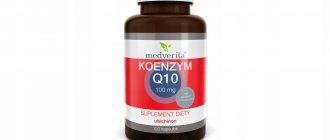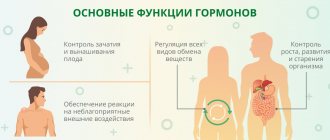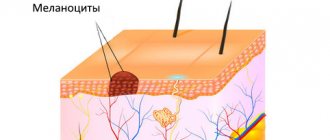Omega-3 is commonly understood as fatty acids that help improve human health and have a positive effect on the functioning of all organs and the entire body as a whole. They take part in the creation of new cells, support the functioning of the nervous, cardiac and vascular systems. To stay healthy, it is important to ensure that you get enough omega-3 in your body through food.
- How and how much to take omega-3
- Do pregnant women need omega-3?
- Do children need omega-3?
- Contraindications and adverse reactions
- Interaction with other drugs
- Storage conditions and shelf life
Indications for use
Omega-3 is taken for various conditions and problems:
- help with mental disorders;
- maintain healthy skin;
- maintain eye health;
- help with weight loss;
- reduce the likelihood of cardiovascular diseases;
- have a beneficial effect on the course of pregnancy;
- improve liver function;
- reduce the risk of allergic reactions;
- strengthen bones.
Omega-3s are especially beneficial for older people. The supplement is considered an excellent prevention of senile insanity, absent-mindedness, and improves memory. Many people take it for diabetes to control weight.
How and how much to take omega-3
Fatty acids, which can be purchased over the counter without a prescription, are sold in the form of gel capsules for internal use. It is best to take the supplement at the same time each day. It is important to strictly follow the instructions for taking omega-3 capsules.
You need to take the supplement 1 capsule three times a day with meals. If taken before meals, the result will not be noticeable. Capsules must be swallowed whole.
The maximum permissible daily dose of omega-3 has not been established. But many experts assure that to maintain health, taking 200-250 mg per day is enough. For serious illnesses, the dose can be increased to 2000 mg per day.
Children from 12 months can be given 500 mg per day. Every year the dose can be increased little by little.
For noticeable results, you need to take the supplement every day for 2-3 months. Afterwards, you can take a break for 1-2 months and resume the course again. Only an experienced doctor can determine a more accurate dosage and duration of the treatment course.
Omega-3 can be obtained in small quantities from regular foods.
Beneficial features
In addition to the anti-inflammatory effect, these supplements have a number of specific properties.
Acceleration of metabolism
Omega-3s can help you lose weight because they speed up your metabolism, and the higher your metabolic rate, the more calories you'll burn. A French study in which young people took 6g of fish oil for twelve weeks found a 3.8% increase in metabolic rate.1
Another study of healthy older women who took 3 grams of fish oil per day for twelve weeks found an increase in metabolic rate of approximately 14%, equivalent to burning an additional 187 calories per day.2
Increased amount of fat burned
Research shows that consuming fish oil may also increase the amount of fat you burn during exercise.
Researchers believe that fish oil may help the body switch to using fat as a fuel source during exercise.3
A 2015 study by a team of Canadian and Japanese scientists found that women who received 3 grams of fish oil per day for twelve weeks burned 10% more calories and 19–27% more fat during exercise.2
The results of this study may explain why many scientific experiments have shown that taking fatty acid supplements in combination with exercise resulted in more effective fat loss results than exercise alone.4
Reducing hunger
This property can be especially useful for those who are on a diet, because often during such periods the feeling of hunger increases. In a study of healthy dieters, participants were divided into two groups to take less than 0.3 g or more than 1.3 g of omega-3 per day. Two hours after eating, the group taking the higher dose reported feeling more full.5
Improved memory and cognitive function
According to a study published in the journal PLoS One
, consuming omega-3 fatty acids may help improve working memory in healthy young adults.6
Ensuring normal brain function
EPA and DHA play an important role in baby's brain development. A number of studies have shown that pregnant women's consumption of fish or fish oil is associated with higher intelligence scores and better brain function in the children they give birth to.7
Omega-3 fatty acids are not only important for children's brains, they are essential for maintaining normal brain function throughout life. They are present in the cell membranes of brain cells and help maintain healthy cell membranes.8
Bone Density
Fish oil may help increase bone density. In addition to calcium and vitamin D, fish oil will greatly benefit your bones.
An Israeli-American study conducted in 2013 showed a link between consuming high amounts of fish oil and greater bone mineral density.9
Do pregnant women need omega-3?
For pregnant women, omega-3 plays an important role. The supplement has a positive effect on the formation of the baby’s organs and the development of the fetus itself. According to research, children whose mothers constantly took omega-3 are distinguished by strong immunity, developed mental abilities, and good coordination. It is especially important to take in the 1st and 3rd trimester of pregnancy.
In addition, omega-3 prevents the appearance of bad mood. Taking the supplement is an excellent prevention of possible complications during pregnancy, including miscarriages.
With a lack of omega-3, there is a risk of postpartum depression. Stress and mood swings are also possible during pregnancy. External problems are also noted: dry skin, joint pain, absent-mindedness, memory impairment.
How to choose the right supplement?
It is very important to know that the key to maintaining excellent health is the correct ratio of omega-6 to omega-3 fatty acids in the body.
Balance is important
The fact is that omega-6s are responsible for inflammatory processes in the body, slow down metabolism, and in case of excess they cause and provoke various types of inflammation and swelling. Omega-3, on the contrary, relieves inflammatory reactions. When inflammation occurs in the body, omega-6 is responsible for it, and omega-3 is responsible for healing.
The optimal ratio is 1:3-6
So, the most optimal ratio of omega-3 to omega-6, according to various sources, is 1:3-6. In Russia, for the majority of the population, this ratio reaches 1:60, which provokes various kinds of systemic inflammatory reactions and accelerates the aging process. In this regard, the key point in correcting the population’s nutrition is to enrich the diet with omega-3 acids, while limiting omega-6, which are found in abundance in various vegetable oils, so beloved by the majority of Russians.
What to look for?
Omega-3s are available for sale in a wide range. How to choose exactly the supplement that is best suited for you?
Let's start with vegans. If you are a vegan or vegetarian and want to take plant-based omega-3s, then vegan omega-3s are your choice.
The rest of you need to know the difference between fish oil and fish oil. The first is obtained from the liver of fish, which, as an organ, accumulates harmful metals and toxic substances. If the finished product is poorly cleaned, harmful substances may remain in it. Fish oil is obtained from the muscle tissue of fish, and therefore it is better to give preference to it.
Amount of EPA and DHA
It is also necessary to pay attention to the amount of the two most beneficial fatty acids in the supplement: EPA and DHA.
According to the recommendations of the American Heart Association
- 250-500 mg of EPA and DHA should be taken per day. Therefore, when choosing a product, compare the content of these acids in one dose. Consider the nutritional value of the foods you consume, your athletic activity (for athletes, the recommended dose is on the upper end), and, taking into account the recommended doses, choose the supplement that is most suitable for you. Antarctic krill oil, for example, contains 60g EPA and 28g DHA per capsule, and our Omega-3 Plus Elite contains a powerful dose of 530mg EPA. Our website offers a large selection of omega-3 supplements: here you will always find what you need.
Do children need omega-3?
Omega-3s are very important for a child. The supplement has a positive effect on the functioning of the brain, heart and other organs, improves vision, and supports psychological well-being. If there is a shortage of this useful substance in a child’s body, excessive activity and problems with emotional background may occur.
Before you start giving your child omega-3, nutritionists advise adjusting his diet. It is worth adding fatty fish. If children do not like fish, then unrefined raw flaxseed oil can be given instead. Omega-3s are found in large quantities in the following foods:
- salmon;
- herring;
- shrimps;
- mackerel;
- anchovies;
- beef;
- walnuts;
- dairy products (milk, yoghurt);
- eggs;
- juices
conclusions
To summarize, we can conclude that Omega-3 unsaturated fatty acids:
- improve brain activity;
- affect mental health and nervous system;
- have an antithrombotic effect
- have an anti-inflammatory effect
- stimulate the immune system.
Omega-3 is involved in many processes in the human body, so proper and balanced nutrition is an important element of good health and longevity. Whether or not you take additional Omega-3 is up to you, but we still recommend getting fatty acids naturally, from food, by adding fresh fish, high-quality oils, nuts, seeds and avocados to your diet.
Contraindications and adverse reactions
You should avoid taking the drug if you have an individual intolerance to at least one component. Other contraindications include:
- allergic reactions to any type of fish;
- for serious bleeding;
- in the first days after surgery;
- with an active form of tuberculosis;
- for certain diseases of the gastrointestinal tract, liver and kidneys.
Adverse reactions may occur in the form of allergies, gastrointestinal disorders, vomiting, nausea, constipation or diarrhea, dizziness, and headaches. In rare cases, skin problems may occur.
There may be cases of overdose, manifested by the side effects described above.
If undesirable symptoms appear, you should immediately stop taking omega-3 and begin symptomatic treatment.
Taking omega-3 does not affect the ability to drive vehicles and other machinery.
EXTRACARDIAL EFFECTS OF PUFAs
Most dermatoses are inflammatory processes of the skin, which are usually accompanied by intracellular edema of the epidermis in combination with intercellular edema or ballooning degeneration. Moreover, inflammation can be acute or chronic.
Acute inflammation
is accompanied by the deposition of infiltrate in the skin, the main cellular elements of which are polymorphonuclear leukocytes - neutrophils and eosinophils.
In chronic inflammation,
the infiltrate in the skin consists mainly of lymphocytes (looks like perivascular or diffuse foci), as well as histiocytes, fibroblasts, plasma cells, epithelioid cells, and single giant cells.
Currently, EPA and DHA are widely used in the treatment of chronic inflammatory skin diseases (psoriasis, atopic dermatitis, acne, etc.). It has been found that in some skin diseases (eczema, atopic dermatitis, psoriasis), the concentration of arachidonic acid in the affected tissues is 8 times higher than in healthy skin.
In aesthetic medicine, PUFAs are recommended for the prevention of premature aging of the skin and its protection from damage associated with insolation. PUFAs stimulate cell growth and division, ensure collagen synthesis, which helps fight wrinkles, atrophy and xerosis of the skin.
It is known that most types of alopecia
accompanied by inflammatory changes at the level of hair follicles, in the peripillary and perifollicular zones. Thus, one of the most severe types of hair loss - alopecia areata - is essentially nothing more than a chronic autoimmune inflammatory disease that leads to recurrent non-scarring hair loss.
For androgenetic alopecia
(AGA) there is also no doubt that the inflammatory process is its frequent companion. Thus, in 1992, it was found that the inflammatory infiltrate in the upper third of the hair follicle, represented by activated T cells and macrophages, is associated with thickening of the hair membranes and an increase in collagen bundles. In 1993, it was noted that in 40% of cases of androgenetic alopecia in men, perifollicular inflammation is detected. When examining biopsy specimens, fibrosis is determined, consisting of soft concentric layers of collagen, which distinguishes it from fibrosis in cicatricial alopecia (Fig. 4).
One scientific paper proposed the term “microinflammation” in androgenetic alopecia to distinguish it from classic inflammation in cicatricial alopecia. In 2014, the presence of “peripillary signs” in androgenic alopecia and their correlation with superficial perifollicular inflammation was trichoscopically demonstrated (Fig. 5).
It is known that the presence of microinflammation reduces the effectiveness of minoxidil treatment from 77 to 55%. Fibrosis is also associated with the development of frontal fibrous alopecia, which usually occurs in postmenopausal women (Fig. 6). Most often, fibrosis begins at the mouth of the hair follicle. This localization suggests that the cause may be an immune response to pathogenic or opportunistic flora - Propionibacterium, Staphylococcus and Malassezia.
Keratinocytes, macrophages and neutrophils produce nitric oxide (NO) in response to immunogenic factors, stress and toxic reactions, and UV irradiation. Under the influence of increased concentrations of NO, sharp vasodilation occurs, vascular permeability increases, edema forms and the subsequent development of an inflammatory reaction. In this case, nitric oxide combines with superoxide, forming peroxynitrite anion (ONOO-), which induces DNA damage and mutations.
One study found that the combined use of Omega-3 PUFAs with antioxidants - zinc, taurine and plant polyphenols - can reduce pathological hair loss and improve hair quality in both men and women.










